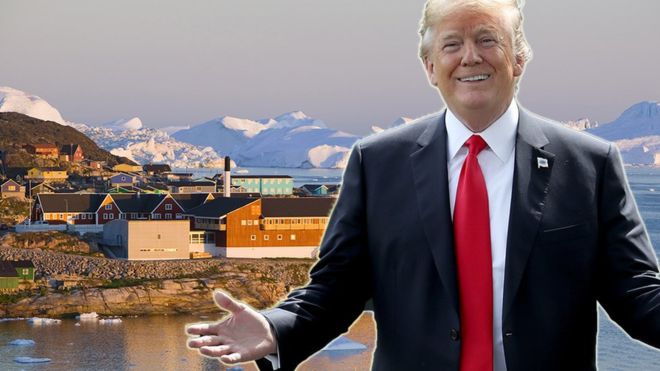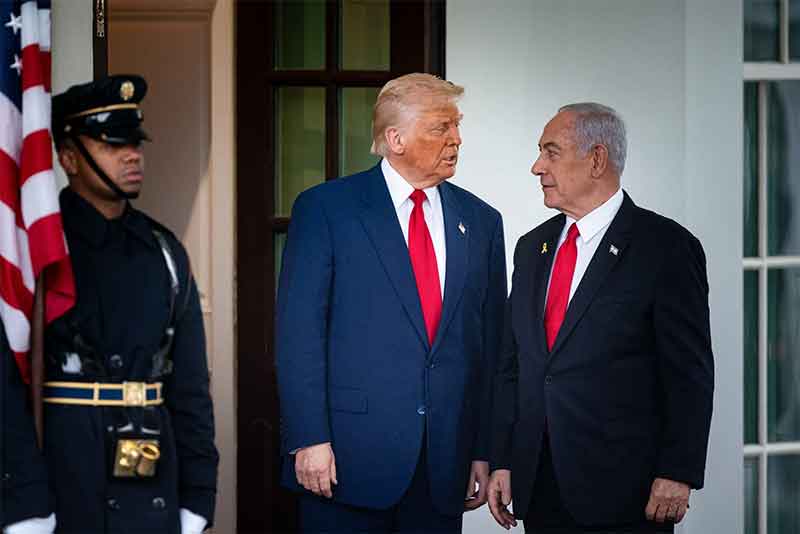
Haven’t the critics worked it out yet? US President Donald Trump chugs to the coal of nonsense that may come in the wrapping of some sense. Initial mad-cat comments, when cobbled together, might reveal some pattern in time.
Take, for instance, the recent offer to purchase Greenland. Considered laughable, purchasing territories has notable, historical precedent in US foreign policy. Territorial aggrandizement through such means has been something of a US specialty, complementing the usual technique of brutal military conquest.
The Louisiana Purchase of 1803 was a steal by President Thomas Jefferson, almost doubling the territory of the United States. Alaska also went the way of purchase, being transferred by Russia to the US in 1867 for $7.2 million. It was something the Russians would come to rue: within a half-century, that amount had been earned back a hundred times over.
That same decade saw US State Department officials turn their attention to Greenland. An 1868 publication for the department compiled by Benjamin Mills Peirce casts more than a fleeting eye on the resources of both Iceland and Greenland, acknowledging the treaty with Denmark which was ostensibly meant to cede control of the islands of St. Thomas and St. John to the US. (The US State Department describes this attempt on the part of Secretary of State William Henry Seward to acquire the Danish West Indies rather laconically as “peaceful territorial expansion”.)
This observation in the report comes with its inaccuracies, largely based on premature optimism: the US Senate spitefully rejected the treaty, despite being ratified by the Danish parliament and its approval by the very limited suffrage plebiscite. Anger was expressed at Seward’s persistent support for the troubled President Andrew Jackson during impeachment proceedings. US interest persisted, though it was the turn of the Danish upper house to return the serve of repudiation in 1902 in refusing to ratify the agreement. It took the winds of the First World War to encourage a formal transfer of the Danish West Indies on April 1, 1917.
The 1868 report uses rather familiar language to Trump’s, both in political and economic terms. The Danish authorities are held to task for their great neglect of invaluable development opportunities. Iceland is praised for “pasture and arable lands, its valuable mines, its splendid fisheries, and its unsurpassed hydraulic power”. Fully developed (read, by US efforts), a population of one million might be sustained. The population of Greenland is similarly “neglected by Denmark”, despite the island having vast quantities of fauna varieties for the kill, among them “whale, walrus, seal, and shark, cod, ivory-cod, salmon, salmon-trout, and herring”. Obtaining it for the US would make good political and commercial sense: it would flank “British America on the Arctic and Pacific” and force her away from Britain “to become a part of the American Union.”
Enough seriousness was given to Trump’s offer to warrant copy across the media spectrum. The Brookings Institution’s Scott R. Anderson was not hopeful that discussions would go anywhere. “Unfortunately for the president, buying and selling Greenland is, in all likelihood, a legal and political impossibility.”
Anderson acknowledges a traditional acquisitiveness towards Greenland, being a gem of mineral and natural resource wealth. Furthermore, its proximity to Russia and the Arctic, in Anderson’s words, “makes it a major strategic asset for staging various military and intelligence facilities.” This point is already noted by a US presence at the Thule Air Base, something maintained since the Second World War with Danish consent. Admittedly, that presence was encouraged by Nazi Germany’s occupation of the kingdom in 1940, leaving Greenland to slide into the American orbit. Six years later, President Harry Truman wanted to formalise the move by suggesting a sum of $100 million for the island.
Given that the Danish government already permits a degree of US influence, it might have been more prudent of Trump to simply exercise it via traditional forms of seemingly benign encroachment. That approach can be seen in Australia, where an increased US military presence is being felt by way of US marines on rotation in the Northern Territory. But such a technique seems all too quiet for the Trump boardroom of hiring and firing. On Wednesday, he cancelled a planned visit to Denmark, deeming the comments made by Danish Prime Minister Mette Frederiksen “nasty”.
Frederiksen’s degree of nastiness was simply one of puzzlement. Talking about purchasing Greenland was “an absurd discussion”, even though the US did acquire the Danish West Indies through purchase and has kept a roaming eye, wallet at the ready, to expansion in the Atlantic. On Sunday, she told a television reporter that, “Thankfully, the time when you buy and sell other countries and populations is over. Let’s leave it there.” She did make one gentle concession. “Jokes aside, we would naturally love to have an even closer strategic relationship with the US.” Deeper cooperation “on Arctic affairs” is still on the table.
Despite Frederiksen’s occasional asides at the United States, Danish foreign policy has been closely aligned with the United States since the attacks of September 11, 2001, bucking a long history of non-interventionism. The Danish Parliament gave its unqualified approval to US actions in retaliation and committed troops to the warring enterprises in Afghanistan, Iraq and Syria. Danish military casualties per capita are the highest of any of the coalition partners in those haphazard efforts. This shedding of blood has led to such emetic observations as those of former Prime Minister Anders Fogh Rasmussen, describing the kingdom as “America’s largest and smallest ally”. (An exhibition at the Museum of Danish America in 2017 proclaimed without reserve that the US and Denmark “have the longest unbroken diplomatic relationship in the world, beginning in 1801.”)
There is also Denmark’s strained and blighted relationship with Greenland, making it susceptible to foreign influence. The largely self-governing entity has capitalised on Danish indifference, attempting to lure Chinese investment to develop three airports to secure better connections to the US and Europe. (Denmark reluctantly caved in last year in an effort to keep the PRC at bay.) Greenland’s Ministry of Foreign Affairs has, however, drawn the line over a proposed sale. “We’re open for business,” went an official tweet, “not for sale”.
The Greenland spat has revealed the obstinate ahistorical context of Trump’s world. Allies, for one, are to be hectored, their efforts dismissed as paltry. Despite Danish contributions to the foolhardy efforts of the US imperium, Denmark could still be scolded for spending a mere 1.35% of GDP on NATO. “They are a wealthy country,” tweeted Trump, “and should be at 2%”.
The president had been insulted, his ego put down by the prime minister of a small state. “You don’t talk to the United States in that way, at least under me,” he told reporters in Washington. “I thought it was not a nice statement, the way she blew me off.” The US was never blown off and remains the oversized fly in the ointment of Denmark’s foreign policy. As for Greenland, Trump might have asked its own prime minister, Kim Kielsen.
Dr. Binoy Kampmark was a Commonwealth Scholar at Selwyn College, Cambridge. He lectures at RMIT University, Melbourne. Email: [email protected]
SIGN UP FOR COUNTERCURRENTS DAILY NEWS LETTER















































